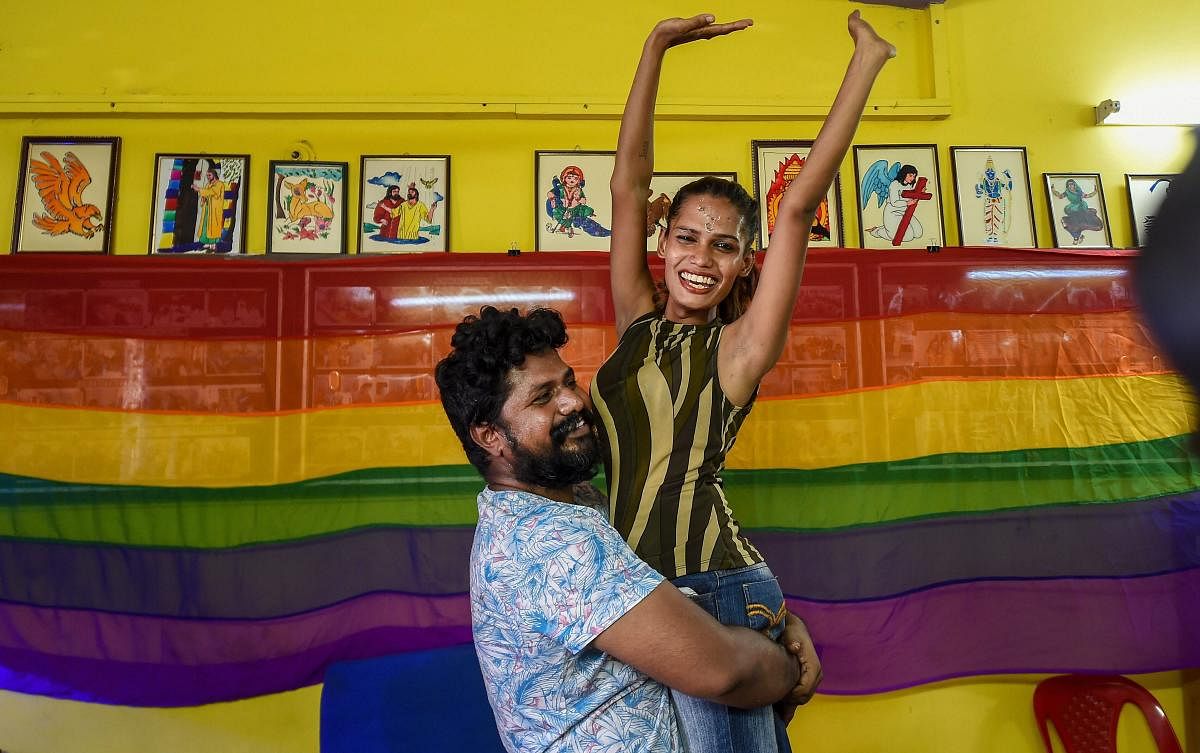A long haul came to an end on September 6 when a five-judge Constitution Bench decriminalised part of the 158-year-old Section 377 of the Indian Penal Code (IPC) with regard to consensual gay sex, saying that it was “irrational, indefensible and manifestly arbitrary”, and violative of the fundamental rights to equality, life with dignity, personal liberty, non-discrimination, privacy and expression under Articles 14, 15, 19, and 21 of the Constitution.
The political undertone, bordering on apprehension, was not to be missed when the apex court said it was duty-bound to strike down the law and not to leave it to majoritarian government, which was morally opposed to gay sex on the erroneous assumption of homosexuality being against ‘Bharatiya’ culture, to address it. “It is our duty to strike down a law the moment we find it to be in conflict with fundamental rights. We don’t leave it to the majoritarian government, which may or may not act”, the court said, mindful of the dictates of vote-bank politics.
There have been legal vacillation earlier. In 2009, the Delhi high court ruled Section 377 which prohibited “carnal intercourse against the order of nature with any man, woman or animal” as unconstitutional and lifted the ban for consenting adults, raising hope. But the Supreme Court bench of Justices Singhvi and SJ Mukhopadhyay in 2013 reversed the Delhi HC verdict and held that Section 377 “does not suffer from the vice of unconstitutionality”, and surprisingly came on the side of the regressive view that homosexuality was a crime against nature.
However, the court said it had upheld the constitutionality of Section 377 on the ground that “the LGBT community comprised only a minuscule fraction of the total population and that the mere fact that the said Section was being misused is not a reflection of the vires of the Section.”
While we must hail the apex court’s verdict, we must be wary of the excesses of the new-found freedom. The added danger for a country like India is that legal progress is often not in tune with social progress. One may call it the ‘Gurgaon (now Gurugram) Syndrome’.
Gurugram is full of swanky malls and posh office complexes, but it is surrounded by people with landed, feudal and patriarchal mindset and entitlements who find the entire edifice of development somewhat alien to their hidebound culture. For a people who have for ages prided themselves on a sexist culture, of which heterosexuality, the male-female distinction and patriarchy are core to the belief system, it will take a long time to become really respectful about a parallel sexual culture of homosexuality, fresh out of the closet.
“Constitutional morality cannot be martyred at the altar of social morality and it is only constitutional morality that can be allowed to permeate into the Rule of Law”, Chief Justice of India Dipak Misra ruled significantly, adding that societal morality cannot overturn the fundamental rights of even a single person. This societal conflict might easily pose a threat, as in his separate judgement, Justice DY Chandrachud conceded that due to Section 377, the LGBT people were forced to live in hiding.
What is more important is that the State must not capitulate to the popular whims based on majoritarian sexual orientation. The bench did remind the State that it cannot persecute people and decide the boundaries of what is permissible and what is not, holding that Section 377 was based on “deep-rooted stereotypes of the society” that were violative of the fundamental rights to equality and life with dignity. To fight the stereotypes is the major challenge, as legal redress is not readily forthcoming. Unfortunately, constitutional safeguards without the right means to access them render them ineffectual. Simply put, mere goodwill is not enough without the zealous mechanism to protect it.
Centuries of suffering
That it took nearly a century and a half to undo a colonial legacy prompted Justice Indu Malhotra to rightly say that “history owed an apology” to the members of the LGBT community and their families for the delay in providing redressal for “the ignominy and ostracism” that they have suffered through the centuries. While we try to grapple with the pulls of a ‘new India’ and ancient Bharat, we are to yet unshackle ourselves from Thomas Macaulay’s legacy, that continues to exist 68 years after the coming of a liberal Constitution.
In an open letter to the government in 2006, author Vikram Seth had claimed that Section 377 had “been used by homophobic officials to suppress the work of legitimate HIV-prevention groups,” leaving gay and bisexual men in India “defenceless against HIV infection” since by not recognising them, the fight against AIDS was incomplete. It further made the availability of sexual health services for prisoners difficult.
Justice Chandrachud rejected the contention of some of the respondents that decriminalising the same sex relationships amongst the LGBT community would have a ‘cascading’ effect on other statutes, including the spread of dreaded diseases like AIDS with the counter-argument that the cause of the sexually transmitted diseases was not sexual intercourse but unprotected sex. Sexual hygiene is thus really an important area of public health that must not be brushed under the carpet.
The Commission on Review of Administrative Laws in a 1998 report had identified 1,300 outdated statutes, calling for their repeal. The report had come down heavily on the bureaucracy, not only for its failure to reduce the legislative burden but also for adding to it. We must understand that 21st century India cannot be governed by 19th century laws. Decriminalising homosexuality is thus an important exercise of spring-cleaning.
